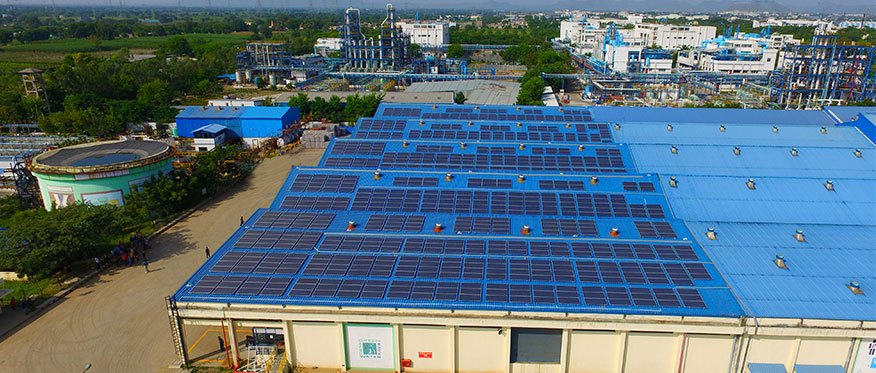Things to consider while installing a rooftop solar plant
Saumy Prateek 06 July, 2022 | Wednesday

In India, numerous educational institutes, factories, commercial buildings and homes have rooftops that receive ample sunlight during the day. These are ideal for harnessing the sun’s energy by converting it into electricity. Moving to solar power has proven to be a lucrative investment for corporates, institutions and homeowners across the country. The benefits range from saving up to 80% on monthly electricity bills to promoting a sustainable society. Installation of rooftop solar plants in India has increased from 5 MW in 2010-11 to over 7000 MW in 2021-2022. Since installing a solar plant on a rooftop is quite expensive, there are various factors to be considered before making a move.
-
Feasibility of the rooftop
Power generation using a rooftop solar system depends on the availability of solar irradiation throughout the year and the area available on the rooftop. The orientation of the rooftop towards the sun is also important. Exposure towards the south is ideal because India is situated in the northern hemisphere and south-facing rooftops receive the maximum amount of solar irradiation as the earth rotates on its own axis at an inclination. -
Is your rooftop solar ready?
In India, most buildings are too close to each other; hence, it is important to check that no shadow falls on the rooftop from nearby buildings/objects. It is also important to check the presence of dust/pigmentation/haze or particulate matter in the atmosphere. In addition to determining how frequently the panels would need to be cleaned and washed after installation, this step will help in designing and maintaining the rooftop solar plant. There are many places in India where dust accumulates quickly on the panels, thus hampering optimum generation. Early intervention can prevent loss of generation, downtime, or safety incidents. -
Type of rooftop available
The load-carrying capacity (roof stability) of the rooftop should be checked beforehand. The solar panels with structure typically weigh 15 kg per sq. m. This weight varies depending on the technology and type of structure. Hence, make sure the rooftop is strong enough to bear the load of the solar plant. If the roof is made of RCC, it is probably good enough. However metal rooftops are best suited for solar plants as they are typically heavy and can bear the load. If the rooftop is older or damaged, it gets difficult to install solar panels on them. -
Types of solar power system
i) On-grid - rooftop solar system is integrated with the main grid supply which allows power to be used from the grid supply only when the rooftop solar system is unable to supply the required power. Compensation can be availed from the DISCOMs using ‘net-metering’. All excess power generated can be fed into the grid.
ii) Off-grid - rooftop solar system is not linked to the main grid, instead it runs on its own battery. The battery gets charged by the solar power generated from the rooftop solar plant which is then used to power various applications. This system is very useful when there is no grid supply or when the supply is very erratic with frequent breakdowns.
iii) Hybrid - rooftop solar system is linked to the grid and comprises both on-grid and off-grid systems working in tandem. A battery is used in this too. Once the battery is fully charged excess power generated is fed to the grid generating additional revenues for the consumer.
-
Wind load and other seasonal damages
Solar plants are designed to handle wind pressure up to 150 kmph hence one should match it with the prevailing wind load of the geographical region. The rooftop solar power system also needs to deal with harsh weather like rainfall, lightning storms, hurricanes, hail, and more. The solar panel installation should be leak proof and made with non-penetrating materials. -
Cost benefit
A rooftop solar system can be a source of never-ending electric power supply with careful planning and implementation. The benefits of ‘net-metering’ may differ depending on the tariffs laid down by the respective states. For the commercial and industrial (C&I) sector, there are unique financial schemes, such as zero-investment models, offered by CleanMax.
Solar Energy in India is one of the fastest growing industries and the use of rooftop solar plants for power generation is becoming increasingly popular. The time is ripe to reap the benefits of solar energy for both residential and C&I consumers.